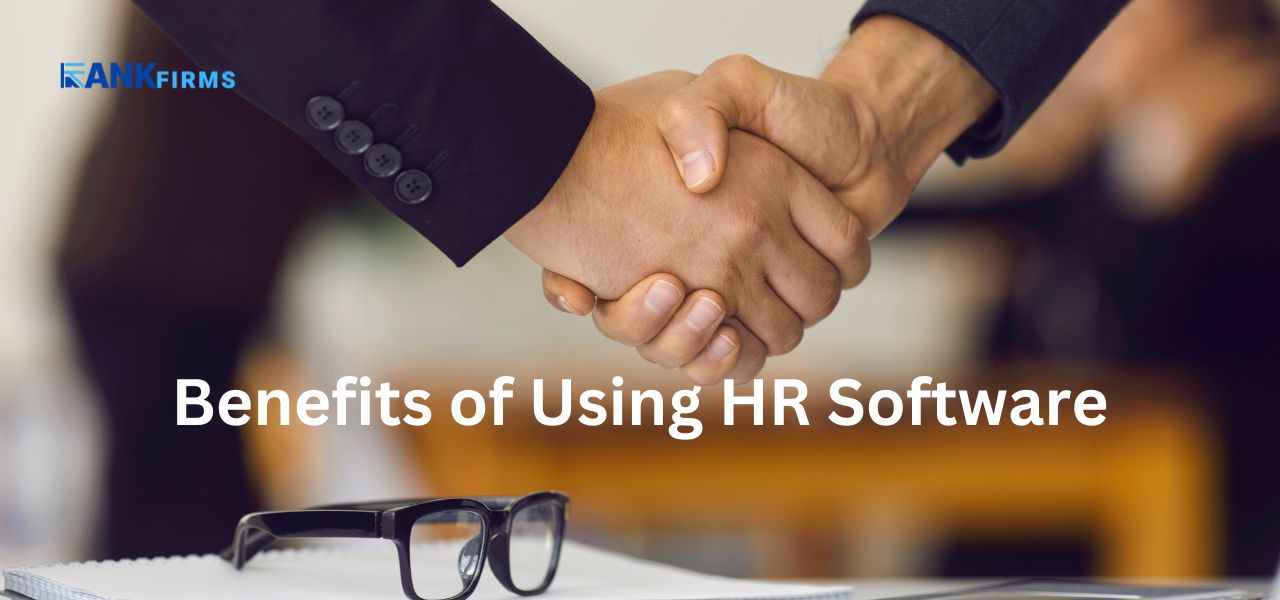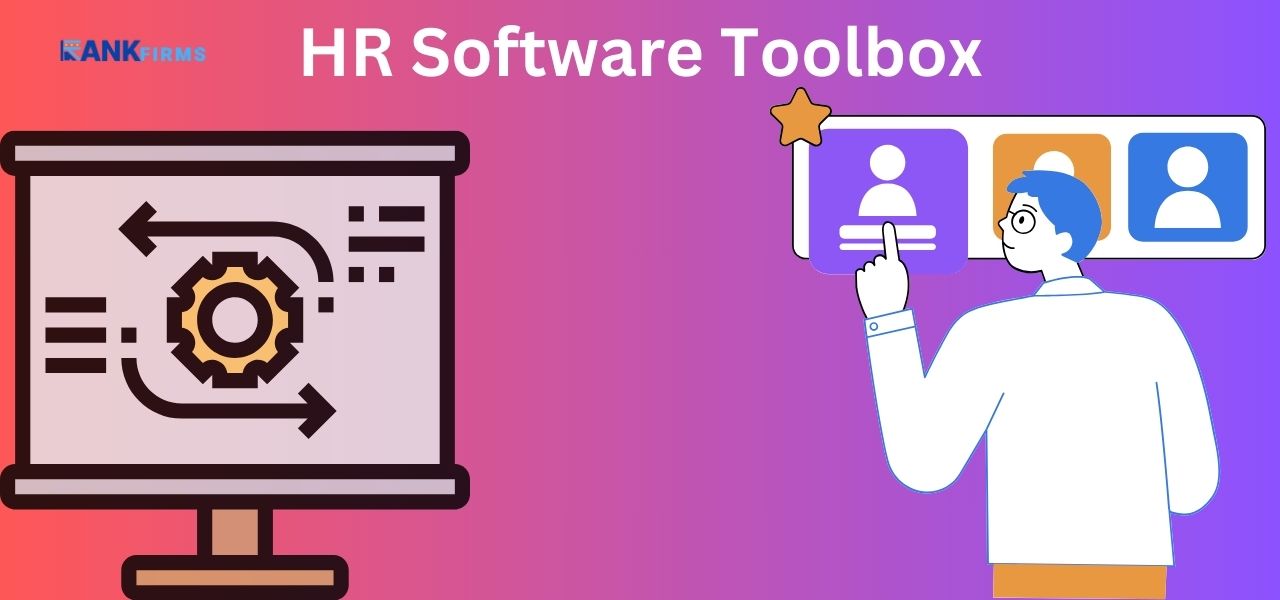Artificial Intelligence (AI) has reached everywhere, especially in primal business operations, i.e. human resources management. There may be consequences of AI but with strategic planning and a clear understanding of the anticipated outcomes, businesses can harness the potential of this new technology. This integration is crucial as this year marks a significant shift in workforce dynamics, with many companies already experiencing its impact.
Two key factors driving this shift are extended employee life cycles and workforce diversification. As a result, human resources professionals in IT services companies have to focus more on understanding employee behaviour and enhancing employee skills. This is where advanced HR software plays a pivotal role.
HR software, also known as Human Resource Management Software or Human Capital Management (HCM) software, is a digital solution that streamlines and automates various tasks within the human resources department of an organisation. Imagine it as a digital toolbox for HR professionals, simplifying administrative tasks and allowing them to focus on more strategic initiatives.
Here’s a breakdown of what HR software can do:
- Employee Information Management: Securely store and manage employee data, including contact details, job titles, salaries, and benefits information.
- Recruitment and Onboarding: Manage the recruitment process, automate job postings, screen resumes, and streamline the onboarding of new hires.
- Payroll and Benefits Administration: Automate payroll calculations, deductions, and tax filings. Manage benefit plans and enrollment processes.
- Performance Management: Set goals, conduct performance reviews, and track employee progress.
- Time and Attendance Tracking: Monitor employee work hours, vacation time, and sick leave.
- Learning and Development: The software provides employees access to training materials and manages learning programs.
- Employee Self-Service: Allow employees to access their data, update personal information, request time off, and view paystubs.
- Reporting and Analytics: Generate reports on key HR metrics, such as employee turnover, absenteeism, and training effectiveness.
If you still think, whether investing in HR software is a promising solution to your management problems, you must look into the benefits this software can provide. But first, let’s see some of the stats:
Market Growth:
- The global HR software market size is expected to reach USD 54.2 Billion by 2030, with a Compound Annual Growth Rate (CAGR) of 10.5% from 2024 to 2030 (https://www.marketresearchfuture.com/reports/core-hr-software-market-3183). This signifies a continuously growing demand for HR software solutions.
Employee Experience Focus:
- 47% of HR leaders report that employee experience is a top priority for their organization in 2023 (https://www.g2.com/). HR software with features like self-service portals, streamlined workflows, and improved communication channels can significantly contribute to a positive employee experience.
Mobile Adoption:
- 47% of organizations are focusing on mobile-first HR technology (https://www.g2.com/). This suggests a growing trend towards offering HR functionalities through mobile apps, allowing employees easier access to information and self-service options on the go.
AI Integration:
- 61% of chief human resources officers (CHROs) say they will be investing in AI to help streamline HR processes (https://www.g2.com/). Artificial intelligence is increasingly being integrated into HR software for tasks like resume screening, candidate matching, and performance analysis.
Security Concerns:
- 21% of HR leaders state concerns about the security of critical data stored on the cloud as a top HR tech challenge (https://www.g2.com/). As HR software handles sensitive employee information, data security remains a crucial consideration for organizations.
Implementation Cost:
- 23% of HR leaders identify technology implementation cost as the top reason that prevents them from using disruptive technologies (https://www.g2.com/). While HR software offers numerous benefits, the initial investment and ongoing costs can be a hurdle for some organizations.
While security and cost are key concerns that always remain unsettling, HR software is even more important for software development companies to manage their workforce effectively. Here are the reasons for you to invest in HR software.
Benefits of Using HR Software

1. Increased Efficiency:
Imagine HR staff swamped with paperwork and manual processes for tasks, like scheduling interviews, processing payroll, or managing employee leave. HR software automates these repetitive tasks, freeing up valuable time. This allows HR professionals to:
Focus on strategic initiatives:
They can dedicate more energy to activities like workforce planning, talent development, and employee engagement strategies.
Provide more personalized support:
With less time spent on administrative tasks, HR can offer more focused attention to individual employee needs and concerns.
Improve communication and collaboration:
Streamlined processes can enhance communication across departments and with employees.
2. Improved Accuracy:
Manual data entry and calculations are prone to human error. HR software minimises this risk by:
Automating data entry:
Information gets captured electronically, reducing the chance of typos or inconsistencies.
Built-in calculations:
Software automates calculations for payroll, taxes, and benefits, ensuring accuracy and compliance.
Data validation:
Many systems have features that validate data to catch errors before they occur.
3. Enhanced Compliance:
Keeping up with ever-changing labour laws and regulations can be a challenge. HR software can help by:
Providing compliance updates:
Some systems offer built-in updates on relevant regulations, helping HR stay informed.
Streamlining compliance processes:
Software can automate tasks like tracking employee certifications or managing leave requests according to legal requirements.
Reducing the risk of audits:
Accurate and well-maintained records minimize the risk of non-compliance issues during audits.
4. Better Decision Making:
HR software provides valuable data and insights that can support strategic decision-making. Here’s how:
HR Metrics and Reporting:
The software can generate reports on key metrics like employee turnover, absenteeism, and training effectiveness. These insights can be used to identify areas for improvement and make data-driven decisions about HR policies and programs.
Talent Analytics:
Advanced HR software can offer talent analytics that help identify high performers, predict employee turnover risk, and optimize recruitment strategies.
5. Improved Employee Experience:
HR software can empower employees and improve their overall experience by:
Self-Service Options:
Employees can access their data, update personal information, request time off, and view paystubs through a self-service portal. This reduces reliance on HR for basic tasks and gives employees more control over their information.
Simplified Processes:
Streamlined processes like submitting leave requests or expense reports electronically make HR interactions faster and more efficient for employees.
Improved Communication:
HR software can facilitate communication between employees and HR through features like internal messaging or knowledge base articles.
By implementing HR software, organizations can create a more efficient, accurate, and employee-centric HR function, allowing HR professionals to focus on strategic initiatives that contribute to the overall success of the organization.
Also Read: How to choose Right Software Development company?
Bringing Agility & Security With HR Software Toolbox

The world of HR software offers a diverse range of tools to address specific needs within your organization. Here is a detailed explanation of each type of HR software, along with their benefits and features:
1. Applicant Tracking System (ATS)
Features:
Job postings, resume parsing, candidate tracking, interview scheduling, and communication tools.
Benefits:
Streamlines the recruitment process, reduces time-to-hire, improves candidate experience, and enhances collaboration among hiring teams.
2. Human Resource Information System (HRIS)
Features:
Centralized employee data management, payroll processing, benefits administration, compliance reporting, and self-service portals.
Benefits:
Improves data accuracy, enhances compliance, simplifies HR processes, and provides easy access to employee information.
3. Human Capital Management (HCM)
Features:
Core HR functions, talent management, workforce management, HR service delivery, and analytics.
Benefits:
Integrates all HR functions into one platform, enhances strategic decision-making, improves employee lifecycle management, and optimizes workforce productivity.
4. Employee Onboarding Software
Features:
Digital forms, task management, training modules, orientation schedules, and document management.
Benefits:
Simplifies the onboarding process, reduces paperwork, ensures compliance, and enhances new hire experience and productivity.
5. Performance Management Software
Features:
Goal setting, performance reviews, feedback tools, 360-degree evaluations, and performance analytics.
Benefits:
Facilitates continuous performance improvement, aligns employee goals with organizational objectives, and provides actionable insights.
6. Learning Management System (LMS)
Features:
Course creation, content delivery, progress tracking, assessments, and reporting.
Benefits:
Enhances employee skills and knowledge, ensures compliance with training requirements, and supports continuous learning and development.
7. Payroll Software
Features:
Payroll processing, tax calculations, direct deposit, wage and hour compliance, and reporting.
Benefits:
Ensures accurate and timely payroll, reduces administrative burden and enhances compliance with labour laws and regulations.
8. Time and Attendance Software
Features:
Time clock integration, attendance tracking, scheduling, leave management, and reporting.
Benefits:
Improves accuracy in time tracking, reduces time theft, ensures compliance with labour laws, and optimizes workforce scheduling.
9. Employee Benefits Administration Software
Features:
Benefits enrollment, plan comparison, eligibility tracking, and compliance reporting.
Benefits:
Simplifies benefits administration, enhances employee understanding of benefits, ensures compliance, and reduces administrative costs.
10. Workforce Management Software
Features:
Scheduling, labour forecasting, task management, time and attendance, and workforce analytics.
Benefits:
Optimizes workforce utilisation, reduces labour costs, improves scheduling accuracy, and enhances productivity.
11. Talent Management Software
Features:
Recruiting, onboarding, performance management, learning and development, and succession planning.
Benefits:
Streamlines talent acquisition and development, aligns talent strategies with business goals and enhances employee engagement and retention.
12. Compensation Management Software
Features:
Salary planning, incentive management, bonus calculations, equity management, and compliance tracking.
Benefits:
Ensures fair and competitive compensation, enhances budget management, improves employee satisfaction, and ensures compliance with compensation policies.
13. Employee Engagement Software
Features:
Surveys, feedback tools, pulse checks, recognition programs, and analytics.
Benefits:
Enhances employee engagement, identifies areas for improvement, improves workplace culture, and increases employee retention.
14. Succession Planning Software
Features:
Talent assessments, development plans, career pathing, and readiness tracking.
Benefits:
Identifies and develops future leaders, ensures business continuity, enhances talent retention, and aligns succession plans with business strategy.
15. HR Analytics Software
Features:
Data visualization, predictive analytics, reporting, and dashboard creation.
Benefits:
Provides actionable insights, improves HR decision-making, identifies trends and patterns, and supports strategic planning.
16. Employee Self-Service Portal
Features:
Personal data management, benefits enrollment, time-off requests, and pay stub access.
Benefits:
Empowers employees, reduces administrative workload, improves data accuracy, and enhances employee satisfaction.
17. Compliance Management Software
Features:
Policy management, audit trails, compliance reporting, and risk assessments.
Benefits:
Ensures regulatory compliance, reduces risk of penalties, streamlines compliance processes, and improves audit readiness.
18. Expense Management Software
Features:
Expense tracking, receipt management, approval workflows, and reporting.
Benefits:
Simplifies expense reporting, improves accuracy, enhances policy compliance, and reduces processing time.
19. Background Check Software
Features:
Criminal record checks, employment verification, education verification, and reference checks.
Benefits:
Ensures thorough vetting of candidates, reduces hiring risks, and improves compliance with background screening requirements.
20. HR Workflow Automation Software
Features:
Automated approvals, document management, task assignments, and notifications.
Benefits:
Streamlines HR processes, reduces administrative burden, improves efficiency, and enhances process consistency.
Each type of HR software offers specific features and benefits designed to address various aspects of human resources management, ultimately enhancing the efficiency and effectiveness of HR operations. Below we have also mentioned the list of the top 20 HR software used globally.
Also Read: The Best Software Development Frameworks of 2024
Top 20 HR Software You Can Consider Integrating

Here’s a breakdown of the 20 HR software options, highlighting their strengths and target audience:
1. General-Purpose HR Solutions:
Workday:
Renowned for scalability and comprehensive functionality across HR, finance, and planning. (Large Enterprises)
SAP SuccessFactors:
Offers a robust suite for core HR, talent management, and analytics. (Large Enterprises)
ADP Workforce Now:
User-friendly solution for payroll, HR, and benefits administration. (Small to Large Businesses)
BambooHR:
Streamlined platform ideal for applicant tracking, onboarding, and employee management. (Small & Mid-Sized Businesses)
Rippling:
Modern HRIS with a focus on automation and integrations for a connected experience. (All Sizes)
2. Talent Acquisition Focused:
Greenhouse:
Powerful platform for attracting, screening, and managing high-volume recruitment. (All Sizes)
iCIMS:
Applicant tracking system (ATS) with strong candidate relationship management features. (All Sizes)
Bullhorn:
Specialized recruiting software for staffing agencies and high-growth companies. (Staffing Agencies & High-Growth Businesses)
3. Learning & Development Focused:
Cornerstone OnDemand:
Comprehensive learning management system (LMS) for creating and delivering training programs. (All Sizes)
Udemy Business:
Extensive library of online courses for employee skill development. (All Sizes)
LinkedIn Learning:
Wide range of video courses on business, creative, and technical skills. (All Sizes)
4. Payroll & Benefits Focused:
Paychex Flex:
Integrated solution for payroll, HR, and benefits administration. (Small to Mid-Sized Businesses)
Gusto:
User-friendly platform for payroll, benefits, and HR management for small businesses. (Small Businesses)
Zenefits:
Affordable HR solution including payroll, benefits, and compliance tools for small businesses. (Small Businesses)
5. Employee Experience Focused:
BambooHR:
Offers features for employee self-service, performance management, and feedback. (Small & Mid-Sized Businesses)
Culture Amp:
Fosters employee engagement through surveys, feedback tools, and analytics. (All Sizes)
Perks at Work:
Provides a platform to manage and offer employee perks and benefits. (All Sizes)
6. Other Specialized Solutions:
Deputy:
Workforce management software for scheduling, time tracking, and communication (Hospitality & Retail)
Hibob:
User-friendly HR platform for small and medium businesses, with a focus on employee self-service. (Small & Mid-Sized Businesses)
Zoho People:
Comprehensive HR solution for core HR, recruitment, and employee engagement. (All Sizes)
Choosing the Right HR Software:
Selecting the most suitable HR software depends on your organization’s specific needs. Consider factors like:
1. Company size and budget:
Larger enterprises might require comprehensive solutions like Workday or SAP SuccessFactors, while smaller businesses may benefit from user-friendly and affordable options like Gusto or Zenefits.
2. Industry needs:
Specialized solutions like Deputy for hospitality or Bullhorn for staffing agencies cater to specific industry requirements.
3. HR functionalities needed:
Identify the core HR functions you need to manage, such as payroll, recruitment, or learning and development.
4. Desired level of user-friendliness:
Choose software that is easy to use for both HR professionals and employees.
5. Scalability:
Consider how well the software can adapt to your organization’s growth plans.
By carefully evaluating your needs and comparing different HR software options, you can find the perfect solution to streamline your HR processes, improve employee experience, and achieve your organizational goals.







